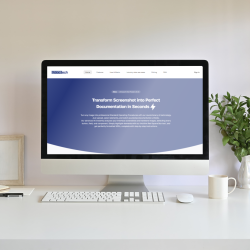The Challenge
One of the key challenges in developing a Human Resource Management System (HRMS) is managing absence logic, which can become highly complex. HRMS platforms need to track various types of employee leave, such as vacation, sick leave, and personal leave, while also considering different company policies and public holidays. Implementing a system that handles leave balances, half-days, and holiday adjustments accurately, while complying with varying national or regional labor laws, requires careful design. The challenge lies in making the absence logic flexible yet precise enough to ensure that all leave-related calculations are handled correctly, and that employees’ time off is accurately reflected in the system.
Another significant challenge is salary calculation, which involves dealing with complex pay structures. Employees may have different salary components such as fixed salary, overtime pay, bonuses, deductions, and commissions. Ensuring the HRMS can accommodate these components while remaining compliant with tax laws and regulations is critical. Moreover, the calculation needs to consider factors such as pay frequency (monthly, bi-weekly), payroll deductions, insurance contributions, and other benefits. The system must process these variables accurately and efficiently, ensuring employees are paid correctly and on time, which is vital for maintaining trust and satisfaction within the workforce.
When building an HRMS using the Laravel framework, there are specific challenges around developing a scalable and secure system. Laravel offers powerful tools such as Eloquent ORM, Blade templating, and middleware, but integrating complex HR functions like absence management, payroll, and benefits requires careful system architecture. The challenge is to build a system that can handle large volumes of employee data, ensure security around sensitive information (such as salary and personal details), and remain modular and maintainable for future updates. Additionally, integrating Excel import functionality to migrate data from spreadsheets introduces another layer of complexity. The HRMS must allow seamless importing of employee records, attendance logs, and payroll data from Excel files, ensuring that data is mapped correctly and without errors while maintaining performance even when dealing with large datasets.
Kalpesh produced a website for my Finance Consultancy start-up business based in Dubai in Nov-24. I had some very specific requirements for the look and feel based on a theme I was asked to choose. Kalpesh was very responsive in delivering my requirements and was available around the clock to clarify or amend where needed. I’m really happy with the results and hoping its a key part of building my business. Thanks!!!
Simon Fee
Marketing Consultant Expert
The Process
Building an HRMS using Laravel begins with thorough planning and requirements gathering, where the development team collaborates with stakeholders to define the key features and functionalities needed for the HR system. This includes understanding the organization’s HR workflows, such as employee records management, leave policies, payroll calculations, attendance tracking, and performance evaluations. During this phase, it’s essential to decide on user roles and permissions, the overall system architecture, and the specific modules required. Laravel’s flexible architecture and Eloquent ORM make it ideal for designing a robust database schema to handle complex relationships between employee records, departments, and payroll components.
Once the foundational requirements are defined, the core HRMS features are developed. Using Laravel’s powerful built-in tools, the development team can focus on implementing essential modules like employee management, leave management, payroll calculation, and performance tracking. Laravel’s built-in authentication system and middleware can handle user roles such as HR managers, employees, and administrators, ensuring secure access to sensitive data. Additionally, integrating Excel import functionality (via Laravel packages like maatwebsite/excel) allows HR departments to easily migrate large volumes of data, such as employee records and attendance logs, from existing spreadsheets into the HRMS. This is critical for businesses that rely on manual data entry or external systems for record keeping.
After the system is built, UI/UX design and thorough testing are key steps in ensuring the system is user-friendly and functional. Laravel’s Blade templating engine provides a streamlined way to build responsive, intuitive interfaces for HR professionals and employees alike. Ensuring mobile compatibility and designing dashboards that display relevant data at a glance will improve user adoption. Once the HRMS is ready, comprehensive testing ensures the system functions as expected—covering everything from payroll calculations to leave management and security features. Finally, after deployment, ongoing maintenance and updates are essential to ensure the HRMS continues to evolve with the company’s needs, adding new features, fixing bugs, and optimizing performance as required.
Conclusion
In conclusion, building an HRMS using Laravel provides a robust, scalable, and secure solution for managing essential human resources functions such as employee records, payroll, attendance, and performance tracking. By leveraging Laravel’s powerful features like Eloquent ORM, Blade templating, and built-in authentication, organizations can create a user-friendly, customizable HR system that streamlines HR workflows, improves data accuracy, and enhances overall productivity. With ongoing maintenance and periodic updates, an HRMS built on Laravel can evolve with the organization’s needs, offering long-term efficiency and seamless integration with other systems.
Let’s Make Things Happen
Curabitur ac leo nunc. Vestibulum et mauris vel ante finibus maximus nec ut leo. Integer consectetur.
“The team at Avada Marketing Consultant is fabulous. They helped us unlock our potential online and offline. We have experienced year on year growth due to their progressive approach.”
George Anderson
Digitalbox CEO





